
A torpedo bomber is a military aircraft designed primarily to attack ships with aerial torpedoes. Torpedo bombers came into existence just before the First World War almost as soon as aircraft were built that were capable of carrying the weight of a torpedo, and remained an important aircraft type until they were rendered obsolete by anti-ship missiles. They were an important element in many famous Second World War battles, notably the British attack at Taranto, the sinking of the German battleship Bismarck, the sinking of the British battleship HMS Prince Of Wales and the British battlecruiser HMS Repulse and the Japanese attack on Pearl Harbor.

The Fairey Swordfish is a biplane torpedo bomber, designed by the Fairey Aviation Company. Originating in the early 1930s, the Swordfish, nicknamed "Stringbag", was principally operated by the Fleet Air Arm of the Royal Navy. It was also used by the Royal Air Force (RAF), as well as several overseas operators, including the Royal Canadian Air Force (RCAF) and the Royal Netherlands Navy. It was initially operated primarily as a fleet attack aircraft. During its later years, the Swordfish was increasingly used as an anti-submarine and training platform. The type was in frontline service throughout the Second World War.

The Battle of Taranto took place on the night of 11/12 November 1940 during the Second World War between British naval forces, under Admiral Andrew Cunningham, and Italian naval forces, under Admiral Inigo Campioni. The Royal Navy launched the first all-aircraft ship-to-ship naval attack in history, employing 21 Fairey Swordfish biplane torpedo bombers from the aircraft carrier HMS Illustrious in the Mediterranean Sea.

The Fairey Albacore is a single-engine biplane torpedo bomber designed and produced by the British aircraft manufacturer Fairey Aviation. It was primarily operated by the Royal Navy Fleet Air Arm (FAA) during the Second World War.

Operation Pedestal, known in Malta as Il-Konvoj ta' Santa Marija, was a British operation to carry supplies to the island of Malta in August 1942, during the Second World War.

The siege of Malta in World War II was a military campaign in the Mediterranean theatre. From June 1940 to November 1942, the fight for the control of the strategically important island of the British Crown Colony of Malta pitted the air and naval forces of Fascist Italy and Nazi Germany against the Royal Air Force (RAF) and the Royal Navy.
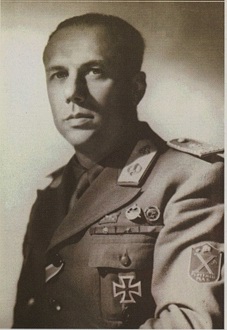
The Decima Flottiglia MAS was an Italian flotilla, with marines and commando frogman unit, of the Regia Marina created during the Fascist regime.

No. 489 (NZ) Squadron was a torpedo bomber squadron established for service during the Second World War. It was a New Zealand squadron formed under Article XV of the Empire Air Training Plan. Although many of its flying personnel were largely drawn from the Royal New Zealand Air Force, the squadron served in Europe under the operational and administrative command of the Royal Air Force as part of Coastal Command.

On 9 February 1945, a force of Allied Bristol Beaufighter aircraft suffered many losses during an attack on the German destroyer Z33 and its escorting vessels; the operation was called Black Friday by the survivors. The German ships were sheltering in a strong defensive position in Førde Fjord, Norway, forcing the Allied aircraft to attack through massed anti-aircraft fire (FlaK).
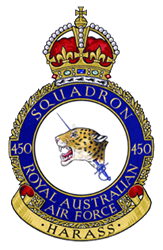
No. 450 Squadron was a unit of the Royal Australian Air Force (RAAF) that operated during World War II. Established at RAAF Station Williamtown, New South Wales, in February 1941, it was the first Australian Article XV squadron formed under the Empire Air Training Scheme.

No. 38 Squadron of the Royal Air Force was a bomber squadron formed in 1916 and was disbanded most recently in 1967.

The military history of Gibraltar during World War II exemplifies Gibraltar's position as a British fortress since the early 18th century and as a vital factor in British military strategy, both as a foothold on the continent of Europe, and as a bastion of British sea power. During World War II, Gibraltar served a vital role in both the Atlantic Theatre and the Mediterranean Theatre, controlling virtually all naval traffic into and out of the Mediterranean Sea from the Atlantic Ocean.
The Easter Sunday Raid was an air attack on Colombo, Ceylon during the Indian Ocean raid by carrier-based aircraft of the Imperial Japanese Navy on 5 April 1942. The Japanese objective was to destroy the Ceylon-based British Eastern Fleet in harbour. The British preemptively dispersed shipping from the harbours before the attacks due to advance warning from intelligence in March 1942, and air reconnaissance during the raid.
806 Naval Air Squadron was a fighter squadron in the Fleet Air Arm that existed from February 1940 to December 1960 and saw active service in the Norwegian campaign, the Dunkirk evacuation and the Malta Convoys.

No. 217 Squadron RAF was a squadron of the RAF. It was formed and disbanded four times between 1 April 1918 and 13 November 1959. In World War I it served in a strike role against enemy bases and airfields in Belgium. In World War II as part of RAF Coastal Command it served first in a maritime patrol role along the Western Approaches and later in an anti-shipping role in the English Channel. Ordered to the Far East in 1942, the squadron was retained for two months in Malta in an anti-shipping role, protecting Allied convoys, before moving to Ceylon to defend the approaches to India, serving in an anti-submarine and anti-shipping role. It was equipped and training for a strike role, when the war ended. In the postwar period, it served for five years in a maritime reconnaissance role, and then briefly in a support role for Operation Grapple, the British hydrogen bomb tests on Christmas Island.
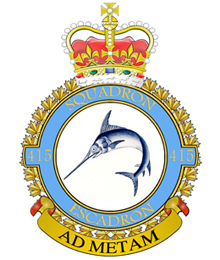
415 Long Range Patrol Force Development Squadron is an air squadron of the Royal Canadian Air Force that first saw service during the Second World War.
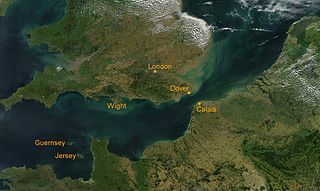
Unternehmen Donnerkeil was the codename for a German military operation of the Second World War. Donnerkeil was an air superiority operation in support of Operation Cerberus, also known as the Channel Dash by the Kriegsmarine.
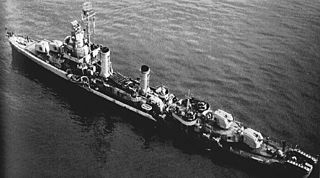
The action off Cape Bougaroun, or the Attack on Convoy KMF-25A was a Luftwaffe action against an Allied naval convoy off the coast of Algeria during World War II. The convoy of American, British, Greek and Dutch ships was attacked on 6 November 1943 by 25 German land-based aircraft. Six Allied vessels were sunk or damaged and six German aircraft were destroyed. German forces achieved a tactical victory, though the Allied warships involved received credit for defending their convoy and reacting to their losses quickly. The quick response led to the rescue of over 6,000 servicemen and civilians without further loss of life.

Operation Mascot was an unsuccessful British carrier air raid conducted against the German battleship Tirpitz at her anchorage in Kaafjord, Norway, on 17 July 1944. The attack was one of a series of strikes against the battleship launched from aircraft carriers between April and August 1944, and was initiated after Allied intelligence determined that the damage inflicted during the Operation Tungsten raid on 3 April had been repaired.

During World War II, Tuscany, the Italian port city of Livorno was repeatedly bombed by the Allied air forces, suffering about a hundred raids altogether, which resulted in it being among the most war-damaged cities in Italy.


















